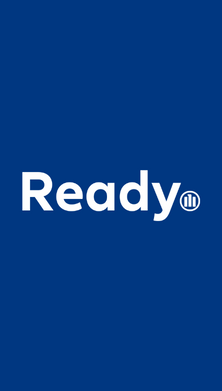1. "Ripple effect" behind larger product recalls
Product recalls are increasing in size and number, predominantly driven by the increasing complexity of global supply chains and concentration of certain components or ingredients on a smaller number of suppliers, as well as tougher regulation.
Global companies now sell their products to millions of consumers. For example, since launching the iPhone in 2007, Apple has sold over a billion units. Meanwhile carmakers VW and Toyota produced over 10 million vehicles apiece in 20161.
At the same time, many manufacturers are sourcing their components, ingredients or raw materials from fewer suppliers, as supply chains become leaner and more global. This has seen huge increases in values at risk and the emergence of a multiplier or “ripple effect”, where a single recall can impact numerous manufacturers, brands and countries, causing reputational damage and large financial losses.

This “ripple effect” has contributed to a number of large product recalls recently, most notably in the food and automotive sectors. For example, in 2016, a recall of sunflower seeds due to possible listeria contamination impacted hundreds of products across dozens of brands. Similarly, a 2015 recall of cumin spice (contaminated by nuts) affected 14 companies, 100 brands, and 153 individual products, and 756 products in different packages2.
The extent of supply chains in the food sector was also revealed by the 2008 Peanut Corporation of America (PCA) recall – one of the largest ever – which was sparked by a salmonella outbreak. Although PCA handled just 2% of the US peanut supply, its peanuts found their way into around 4,000 products, produced by over 200 different companies. The recall was estimated to have cost the food industry some $1bn after an industry-wide 24% reduction in peanut sales. Some leading brands saw sales almost half3, even though they were not implicated. The company had to file for bankruptcy.
In the automotive sector, large airbag and ignition switch recalls have rippled through the supply chain, affecting millions of units across multiple brands and countries.
“Today the automotive supply chain is totally different to 15 or 20 years ago. Consolidation in the automotive industry has brought efficiencies but it has also increased product recall risk,” explains Christof Bentele, Head of Global Crisis Management, AGCS.
“In the automotive segment we see an increasing number of recalls with higher units,” says Carsten Krieglstein, Regional Head Liability Central & Eastern Europe, AGCS. “This is driven by factors such as automotive engineering becoming more complex, faster speed-to-market, leaving less time for product testing, outsourcing of research and development to first and second tier suppliers, as well as increasing cost pressures. Modular strategies of original equipment manufacturers (OEM) means the number of recalled units is likely to increase further."
The recall involving Japanese airbag manufacturer Takata illustrates just how concentrated recall risk has become. The recall is the largest ever to hit the US automotive industry and is expected to result in some 60 to 70 million units recalled worldwide, across at least 19 manufacturers4. Costs have been estimated at close to €25bn5.
“A previously innocuous product can result in billions of financial losses for a sector without any recourse,” says John Turner, Director of Crisis Management at McLarens, a global loss adjusting company.
“Companies are usually confident in their ability to manage their own risks but it’s a different story when it comes to suppliers. You just can’t manage a complex global supply chain 24/7/365. That is a big driver for buying protection such as product recall insurance.”
2. Tougher consumer regulation brings more recalls

“There is now much more attention on how companies deal with defective or contaminated products, how responsive they are and how resilient their product safety systems are,” says Christof Bentele, Head of Global Crisis Management, AGCS. “More than ever, consumers are also part of the agenda and are driving company behavior by making their choices subject to how companies deal with crises.”
Authorities are now far more proactive, particularly in the food sector. Following a number of fatal outbreaks in the US, the Food Safety Modernization Act (FSMA), signed into law in 2011, has resulted in the most sweeping reform of food safety laws in more than 70 years. It sees a big shift in regulatory focus – from reaction to prevention – giving the US Food and Drug Administration (FDA) greater powers to investigate and order recalls. In the wake of a contamination scandal involving infant milk, China also made significant revisions to its Food Safety Law in 2015.
Meanwhile, the number of product recalls in the UK hit a record high in 2015/16, increasing 48% on the previous year, according to analysis of statistics by law firm Reynolds Porter Chamberlain (RPC). The increase was also seen in consumer goods, automotive and pharmaceuticals but was particularly acute in the food sector, driven in part by new EU legislation on the labeling of food allergens. The number of recalls of food and drink products involving mislabeled allergens increased by 62% in 2015/166 following its introduction.
Product safety regulation has also been increasing for automotive and consumer goods. For example, the 2008 Consumer Product Safety Improvement Act in the US introduced whistleblower protections and new testing requirements for substances, such as lead, in consumer products.
“Whether it is the US, Europe or Asia, when the regulatory bar is raised, it creates a risk zone. Companies have a mixed ability to maintain higher standards and adapt their safety culture, and this increases risk,” says John Turner, Director of Crisis Management at McLarens.
3. Undeclared allergens, toxins and environmental contamination: the rise of new recall triggers
Typically, a product recall is triggered by safety concerns that could cause harm or cause bodily injury, although there are many reasons why a company might recall a product.
During 2016, a number of major food recalls were sparked by undeclared allergens and bacterial contamination (in particular listeria, but also E. coli and salmonella). For example, listeria found in soft cheeses, frozen vegetables, ice cream, apples and cantaloupes have all caused large recalls in the US in recent years.
Across North America and Europe, allergens have become a significant public issue – around 15 million Americans are said to have food allergies 7. In fact, undeclared allergens are fastemerging as the primary cause of food recalls in the US. In the first quarter of 2015, 95% of recalls were due to undeclared allergens, with 91% attributed to undeclared nut/peanuts8.
Undeclared allergen recalls (typically involving nuts, milk, wheat and soy) are often a result of a simple manufacturing error, such as mislabeling, mispackaging or unintentional crosscontamination. But they can also be the result of food fraud.
Meanwhile, toxins in consumer products, in many cases imported from Asia, have been another cause of concern in recent years. Lead, arsenic and cadmium have been found in toys, jewelry and cosmetics, leading to a number of recalls and a tightening of safety regulations. In 2007, Fisher-Price9 recalled 1.5 million toys worldwide due to a potential lead poisoning hazard, while cadmium in children’s jewelry made in China has resulted in a string of recalls by retailers in recent years.
Environmental contamination has also triggered several large recent recalls, as chemicals and plastics used in industry and agriculture have found their way into food.
In August 2017, insecticide found in Dutch eggs triggered a massive recall of egg products in 16 European countries and as far afield as China. Early estimates suggested that Dutch chicken farmers suffered losses of almost $40m in that month alone as a result10. In China, there have also been a number of recalls due to heavy metals getting into food.
Micro- and nano-plastics are another potential source of environmental contamination. Tiny particles of plastic, invisible to the naked eye, have been found in seafood, table salt, honey, sugar and beer.
4. Impact of economic pressures and the growth of food fraud
Economic pressures continue to bite across many sectors, putting a growing number of companies and supply chains under pressure. In some cases this is leading to increasing risk of human error and criminal activity. Tougher trading conditions can lead to companies sourcing cheaper suppliers or cutting back on experienced personnel. It can also tempt individuals into acts of fraud, such as using inferior or cheaper ingredients or components.
Food fraud, including economic adulteration and counterfeiting, is a growing risk. And from olive oil to wine, to honey to cinnamon, it is big business. Organized crime groups mix foods with cheaper ingredients or sell inferior products as genuine. At the same time some businesses can be tempted to commit fraud by the need to boost profits. Notable incidents include the 2008 infant milk scandal in China, where milk powder was deliberately adulterated with melamine, and the 2013 horse meat scandal in the UK. The latter involved a massive recall after a manufacturer mixed imported horse meat with beef before selling its products as 100% beef.
“Food fraud has become a major issue that has resulted in large recalls, reputational damage and major losses,” says Christof Bentele, Head of Global Crisis Management, AGCS. “The horse meat scandal is a perfect example, but we have seen similar issues with organic foods, religious foods and milk powder. While some of these food fraud cases can be addressed by insurance, the majority of resulting losses are uninsured. The insurance market is looking for solutions to address this.”
At the same time, the trend for shorter product development cycles means less time to test products or to fully understand the health implications of new materials and ingredients. For example, the use of Bisphenol A (BPA) in food packaging was not an issue 10 years ago. Today, there are questions over its potential impact on human health and the environment. Recent years have also seen increasing health concerns about the use of chemical solvents known as phthalates, which are used in toys, cosmetics and other products.

5. The rise of non-safety recalls and longer tail events
Non-safety recalls have become something of a phenomenon in recent years. These can involve the use of child or slave labor during production, issues around labeling, food fraud and religious or ethical designations, like halal or vegan food. When consumer expectations are not met in such areas, companies often feel obliged to recall products in order to protect their reputations.
UK and US retailers withdrew food products after media reports revealed that certain fish products could be traced back to boats using slave labor in Asia. In 2015, US and European confectionary companies were accused of using cocoa produced with child labor.
“There will be incidents when there is no legal or regulatory requirement to recall but it is the right thing to do. This is a genuine business risk that companies have to be prepared for,” says Christof Bentele, Head of Global Crisis Management, AGCS.
Product recall exposures are also becoming longer-lasting. For example, frozen food has not historically been associated with product recalls, but in 2016 some 456 consumer products sold under 42 separate brands11 were recalled after frozen vegetables from US-based producer CRF Frozen Foods were found to contain listeria. The nature of frozen food means any contamination only emerges once the food is consumed, which may be many months after it was produced, particularly given best-before dates have been creeping up to as long as 24 months for some products.
In the automotive sector, US regulations now require manufacturers to attempt a 100% recall rate over a period of at least 15 years. A recent ignition switch recall affected millions of vehicles, some as old as 18 years old. Notifying consumers and repairing older vehicles is more complex and expensive than for newer vehicles.
6. Going viral - the exacerbating effect of social media for impacted and "innocent" firms

However, it can also exacerbate product recall risk if it is not well managed and can be used as an outlet for disgruntled customers and groups.
Bad news travels fast and a situation can rapidly escalate and become out of control. Even a relatively small recall can become a major crisis. Social media channels can quickly spread false or fraudulent information, which can be detrimental to a company’s brand.
“Social media is a real game-changer,” says Stewart Eaton, Head of Product Recall, Regional Unit London, AGCS. “An erroneous post or tweet can cause reputational damage and directly impact the size of a recall. Social media adds a whole new dimension to product recall losses, meaning companies need to react
much faster.”
Research also shows that social media can even impact “innocent” brands. A study analyzing 1,000 automotive social media sites following recall announcements involving four manufacturers revealed a sharp increase in negative comments about “innocent” brands in addition to those directly impacted by the recall event; a phenomenon the study called a “perverse halo”11 - a perception that others share the problem of the car being recalled.
This phenomenon can also impact the bottom line. Researchers aggregated car models across each analyzed brand and found that the negative comments sparked by a rival brand’s recall also erased $7.3m, on average, from an “innocent” firm’s market cap over just six days.
“If not well managed, social media can mean a company has less control of a crisis, but if social media is approached in a professional and sensitive way, it can actually help keep a recall under control,” says AGCS’ Eaton.
7. Growth of product recalls and insurance in China and Asia
Products from Asia continue to account for a disproportionate number of recalls in the US and Europe, reflecting the eastwards shift in global supply chains and historically weaker product quality controls in a number of countries across the region.
According to the US-China Economic and Security Review Commission, Chinese goods accounted for 23% of all goods in the US in 2014, but represented 51% of all product safety recalls. Meanwhile, China’s share of US toy recalls rose from 10% in 1988 to 98% in 200712. In 2015 China accounted for 2,124 product recall cases in the US, compared with 685 from US companies13. The country also accounted for 62% of the product safety alerts issued by the European Union in 201514.
“There is a clear link between product recall claims and the shift in manufacturing to Asia and China. Product quality management levels in Asia are improving but they are not yet up with the levels seen in the US and Europe,” says Christof Bentele, Head of Global Crisis Management, AGCS.
Asia is still a relatively small market for product recall insurance, compared with North America and Europe. But while Asian companies once only purchased product recall insurance for exports to the US and Europe – especially in the automotive sector – many are now starting to buy cover for their home markets, where product safety regulation and consumer expectations are rising. Government-led recalls are becoming more common – particularly in China. Recall numbers are also on the rise elsewhere, with Singapore and the Philippines among those seeing increased activity.
“More and more Asian companies realize that buying product recall insurance makes sense, even when they only operate domestically,” says AGCS’ Bentele. “It is hard for any company to survive in a market with a bad or faulty product. That is as true for Asia as anywhere else.”
8. “Cyber recall" - Technology and innovation to drive risks and claims of the future
Advancements in technology are both a boon and a challenge for product recall. On the one hand, they offer an opportunity to improve the quality and traceability (see column) of products. On the other, they create new risks.
“What we see today in supply chain management would not have been thought possible even five years ago. The speed of development and the potential for improvements in product safety have been quite amazing,” says Christof Bentele, Head of Global Crisis Management at AGCS.
Manufacturing plants are now mostly automated. And while automation should increase efficiency and reduce human error, it also introduces the risk of a cyber-attack. Motivated by extortion or malicious intent, hackers could theoretically change or contaminate a product at the point of manufacture by controlling machinery or changing processes. For example, the US Department of Homeland Security (DHS) recently warned that syringe pumps used in hospitals around the world have flaws hackers could exploit to change the dosages being delivered to patients15.
Technology itself is likely to become a bigger driver of product recalls in the future, whether it’s recalls around cyber security or the introduction of innovative but untested advances, such as artificial intelligence, nanotechnology or biotechnology.
“Cyber is currently an underestimated risk for product recall,” says AGCS’ Bentele. “We have already seen incidents of recalls for cyber security vulnerabilities in products like cars and cameras. Concern about automation and machine learning is also likely to be accompanied by an increase in product risk.”
In 2015, Chrysler recalled 1.4 million vehicles to fix a software flaw revealed by security researchers while webcams16 were recalled following a cyber-attack in 2016. In August 2017, the FDA17 ordered a recall of almost 500,000 pacemakers in the US to patch cyber security vulnerabilities.
“There are huge pressures to get innovations and advances in material sciences, artificial intelligence and biotechnology to market. And while fast-evolving technology is good news for the efficiency of products, it also produces new recall risks,” says AGCS’ Bentele.
“Failures can happen when there is a shortage of time and not enough testing. This is also where human error creeps in. And that increases the risk of a recall.”
Recalls involving emerging technologies are also likely to be even larger and more complex than today. Widespread introduction of autonomous driving in future, for example, is likely to see a shift in liability from individuals to product manufacturers, a move that could potentially see an increase in recall risk. If a series of accidents raises safety concerns for the artificial intelligence technology behind driverless cars, it could trigger a massive recall.

New technology will raise interesting questions around liability and insurance. “How will insurance policies interact, including product liability, recall and cyber? As yet there are no definite answers,” says AGCS’ Bentele. Already used to manufacture products ranging from aircraft parts to food, pharmaceuticals and human tissue, 3D printing is another area that could change recall exposures.
“Future product recalls will come from new areas,” says Stewart Eaton, Head of Product Recall, Regional Unit London, AGCS. “As insurers, we have to keep abreast of emerging technology issues, such as nanotechnology or 3D printing, to ensure we are able to respond and be proactive.”
What is economic adulteration?
Genome sequencing: Technology improves traceability
New technology is also making it easier for regulators and manufacturers to trace products and identify liable parties. For example, advances in genome-sequencing technology are providing food safety regulators with a powerful new tool to identify
sources of contamination or foodborne illness outbreaks, such as listeria and salmonella. “This is an exciting advance,” says Marcos Garcia Norris, Crisis Management Regional Practice Group Leader, North America, AGCS.
The Food and Drug Administration (FDA) in the US is using genome sequencing to match pathogens found in sick patients with those found in food or production facilities. It also uses technology to track down the root source of contamination by identifying exactly which ingredient is responsible for an outbreak and where in the world the contaminated ingredient may have originated. Genome-sequencing helped trace a large listeria outbreak to soft cheese manufactured by a New Yorkbased company in March 2017. The FDA was able to match the genetic
fingerprint of the listeria bacteria found in a number of ill patients with samples taken at the production facility. It ordered production to be ceased and all products were recalled.
Potential rise in litigation
However, increasing use of such DNA technology could result in an increasing appetite for litigation in future, due to it becoming easier to establish the link between illness and an individual company. Conversely, it could also result in faster claims settlement because of swifter identification of contaminated products.
What is genome sequencing?
References
1. Toyota set to remain world’s largest automaker, Forbes, January 10, 2017
2. The Multiplier Effect Strikes Again, Stericycle Expert Solutions
3. Peanut Outlook – Impacts of the 2008-09 Foodborne Illness Outbreak Linked to Salmonella, US Department of Agriculture
4. Takata Airbag Recall - Everything You Need to Know, Consumer Reports, July 14, 2017
5. Takata puts worst-case airbag recall costs at $24bn, Bloomberg, March 30, 2016
6. UK product recalls reach new high – up 48% in a year, RPC
7. Centers for Disease Control and Prevention
8. Stericycle Recall Index US Q1, 2015
9. Mattel recalls nearly 100,000 toys after lead paint alert, The Guardian, August 3, 2007
10. Contaminated eggs cost Dutch chicken farmers 33 million euros, Reuters, August 23, 2017
11. Social media amplifies damage of product recalls to firms - and their rivals, University of Washington Foster School of Busines
12. FDA Investigated Listeria Outbreak Linked To Frozen Vegetables, US Food & Drug Administration
13. Social media amplifies damage of product recalls to firms - and their rivals, University of Washington Foster School of Business
14. China Product Recalls: What’s at Stake and What’s Next, NERA Economic Consulting
15. Consumer Product Safety Commission3 Toys and Clothing Top The List of Dangerous Products Detected in 2015, European CommissionSecurity warning over hospital syringe pumps, BBC, September 12, 2017
16. Chinese firm recalls webcams, Daily Mail, October 24, 2016
17. Firmware Update to Address Cybersecurity Vulnerabilities Identified in Implantable Cardiac Pacemakers, US Food & Drug Administration
18. Swiss Re Institute















